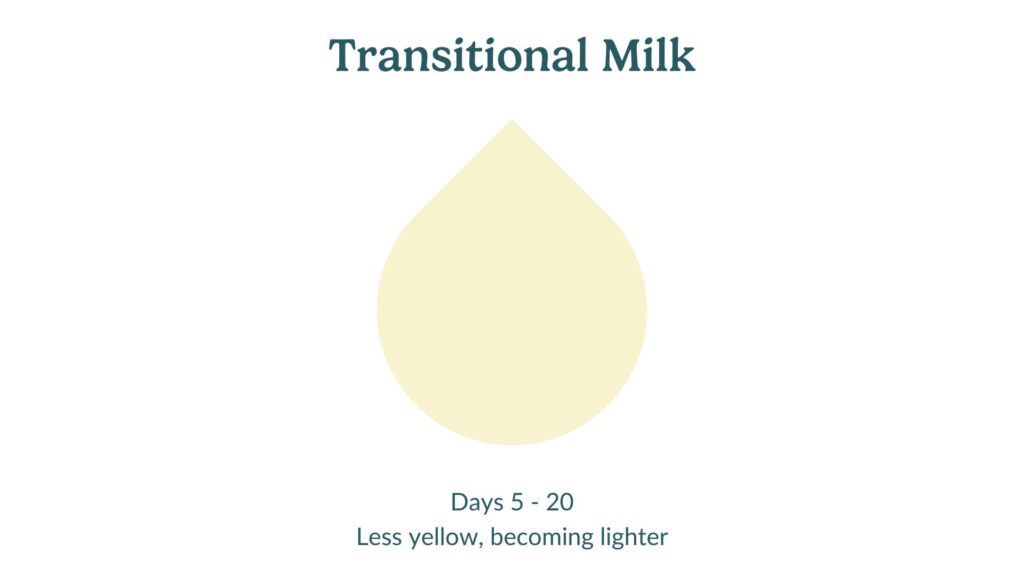transitional milk

Transitional milk
Transitional milk is the stage of breastmilk that comes after colostrum and before mature milk. It usually appears around the third to fifth day postpartum and lasts for about two weeks. Transitional milk is creamier and more abundant than colostrum, providing increased calories, fats, and nutrients to support your baby’s rapid growth during the early weeks.
What to watch out for
Here are some key points to consider and watch out for regarding transitional milk:
- Engorgement: As your body adjusts to producing more milk, your breasts may become engorged, feeling full, hard, and uncomfortable. Nurse frequently and make sure your baby has a good latch to help relieve engorgement. If engorgement persists or becomes painful, consult a healthcare professional. Read more about managing engorgement.
- Milk supply regulation: Your body is learning how much milk to produce based on your baby’s needs. Frequent nursing helps establish a good supply. Try to feed your baby on demand, typically at least every 2-3 hours, to regulate milk production. Read more about increasing milk supply.
- Changes in stool: Your baby's stools will change from the thick, tarry meconium to greenish-yellow, then to yellow, seedy stools as they transition to mature milk. These changes are normal and indicate your baby is getting the right nutrition.
- Let-down reflex: You may start to notice the let-down reflex more during this time, where your breasts may tingle, and milk flows more freely. This is a good sign that milk is being released effectively for your baby.
If you experience difficulties with nursing or have concerns about your milk supply, a lactation consultant can provide personalized support and advice. Read more about what an IBCLC can do for you.
Physical limitations or health circumstances
Certain factors can impact the production and flow of transitional milk:
- Breast surgery: Previous surgeries, such as reductions or augmentations, can affect milk ducts and glandular tissue, impacting milk production. Discuss your surgery history with a lactation consultant for personalized advice.
- Hormonal imbalances: Conditions like polycystic ovary syndrome (PCOS) or thyroid disorders can affect milk production. Proper management of these conditions is essential for maintaining a good milk supply.
- Stress and fatigue: High stress levels and lack of sleep can negatively impact milk supply. Prioritize rest and seek support from family and friends to manage stress.
Other terms
Understanding related terms can help you manage your breastfeeding journey more effectively:
- Colostrum: The first milk produced after birth, rich in antibodies and nutrients. Colostrum transitions to transitional milk within the first few days postpartum.
- Mature milk: The milk that comes in about 10 to 15 days postpartum, after transitional milk. It provides a balanced mix of nutrients, fats, and antibodies for your baby’s growth.
- Foremilk: The milk at the beginning of a feeding session, which is more watery and lower in fat.
- Hindmilk: The milk that comes more to the end of a feeding session, which is richer in fat and essential for your baby’s growth.
- Let-down reflex: The reflex that releases milk from the alveoli into the ducts, allowing it to flow to your baby. Effective let-down is crucial for milk transfer.
- Prolactin: The hormone responsible for milk production. Prolactin levels increase with frequent breastfeeding.
- Oxytocin: Known as the "love hormone," it causes the muscles around the alveoli to contract, pushing milk into the ducts and to your baby.
- Engorgement: Overfull breasts can be uncomfortable and affect milk flow. Managing engorgement helps make sure proper milk balance. Read more about managing engorgement.


